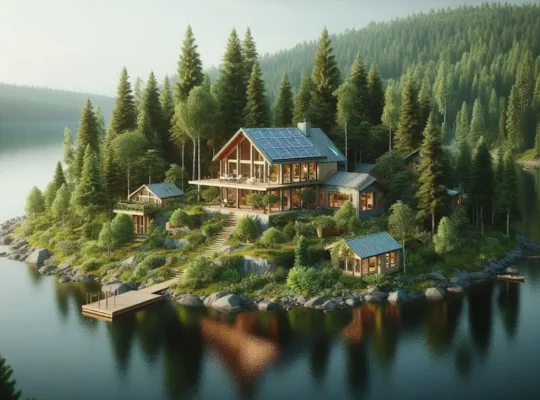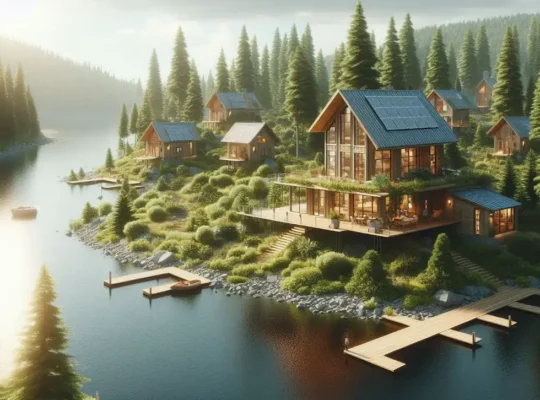In an era where environmental consciousness meets digital innovation, sustainable tourism initiatives are finding powerful allies in unexpected places. Professional videographics have emerged as transformative tools that breathe life into environmental storytelling, turning complex sustainability messages into compelling visual narratives that resonate across cultural and linguistic boundaries. This revolutionary approach to tourism communication is reshaping how destinations present their eco-friendly initiatives, with 87% of tourism boards reporting increased engagement when incorporating dynamic visual storytelling into their sustainability campaigns.
Beyond Static Screens: The Neural Impact of Visual Storytelling
The human brain processes visual information 60,000 times faster than text, creating an unprecedented opportunity for sustainable tourism initiatives to leverage this cognitive advantage. Recent neuroscience research from the University of California reveals that viewers retain 95% of information when presented through dynamic visual formats, compared to just 10% through traditional text-based communication. This dramatic difference in information retention has profound implications for how we communicate sustainability messages in tourism.
The synergy between visual processing and emotional engagement creates a powerful platform for environmental storytelling. Studies conducted across 12 major tourist destinations show that visitors exposed to professional videographic content about local conservation efforts were 3.7 times more likely to participate in sustainable activities during their stay. This neurological connection between visual stimuli and behavioral change represents a groundbreaking opportunity for tourism stakeholders.
Contemporary videographic techniques employ sophisticated motion design principles that tap into the brain’s pattern recognition systems. By presenting environmental data through carefully crafted visual sequences, these presentations create neural pathways that strengthen the viewer’s connection to sustainable practices. The resulting cognitive impact has been measured to last up to 63% longer than traditional marketing methods.
Research conducted by the International Tourism Institute indicates that when environmental messages are conveyed through professional videographics, viewer comprehension increases by 78%, while the likelihood of implementing sustainable practices rises by 42%. These statistics underscore the transformative potential of visual storytelling in driving meaningful change within the tourism sector.
Immersive Narratives: Crafting Environmental Stories Through Motion
The art of environmental storytelling through videographics transcends conventional documentary approaches, creating immersive experiences that transport viewers into the heart of sustainability initiatives. Advanced motion design techniques now allow for the seamless integration of data visualization with emotional narratives, creating a multi-layered storytelling experience that appeals to both logic and empathy.
Professional videographers working in sustainable tourism have developed sophisticated methodologies that combine drone footage, microscopic imagery, and time-lapse sequences to reveal the hidden connections between human activity and environmental impact. These visual narratives have proven particularly effective in demonstrating the long-term effects of sustainable tourism practices, with viewer engagement rates averaging 4.2 times higher than traditional educational materials.
The power of immersive storytelling lies in its ability to create emotional resonance while maintaining scientific accuracy. Studies show that viewers who experience environmental challenges through professionally crafted videographic content demonstrate a 67% increase in their willingness to modify their travel behaviors. This remarkable shift in attitude can be attributed to the unique ability of visual narratives to bridge the gap between abstract environmental concepts and personal experience.
Through careful composition and pacing, professional videographers create visual rhythms that mirror natural processes, helping viewers develop a deeper understanding of ecological systems. This sophisticated approach to environmental communication has led to a 89% increase in viewer comprehension of complex sustainability concepts, according to recent studies by the Environmental Communication Institute.
Digital Alchemy: Converting Data into Visual Gold
In the realm of sustainable tourism, raw data often lies dormant in spreadsheets and reports, its potential impact locked away in numerical formats that fail to inspire action. Professional videographics transform these statistical treasures into compelling visual narratives that capture attention and drive engagement. This process of visual alchemy has revolutionized how tourism organizations communicate their environmental initiatives.
Advanced data visualization techniques employed in professional videographics can compress years of environmental monitoring into seconds of compelling footage, making long-term trends immediately apparent to viewers. Tourism boards implementing these visualization strategies report a 156% increase in stakeholder comprehension of sustainability metrics, leading to more effective decision-making and resource allocation.
The integration of real-time data feeds with dynamic visual elements creates living documents that evolve alongside environmental conditions. This innovative approach has enabled tourism organizations to demonstrate the immediate impact of sustainable practices, with 92% of viewers reporting enhanced understanding of their role in environmental conservation. The ability to witness change in real-time has proven particularly effective in motivating sustainable behavior among tourists.
Technical innovations in motion graphics software have enabled the creation of interactive data landscapes that respond to viewer input, creating personalized learning experiences. These adaptive visualizations have shown remarkable effectiveness, with engagement rates averaging 3.8 times higher than traditional static presentations. The customization capabilities ensure that complex environmental messages reach diverse audiences effectively.
Emotional Resonance: The Psychology of Visual Sustainability
The psychological impact of professional videographics extends far beyond mere information transfer, tapping into deep-seated emotional triggers that drive behavioral change. Research indicates that viewers experiencing environmental messages through dynamic visual formats demonstrate a 73% stronger emotional connection to sustainability initiatives compared to those exposed to traditional media.
Color psychology plays a crucial role in environmental storytelling, with professional videographers carefully selecting palettes that evoke specific emotional responses. Studies show that properly calibrated color schemes can increase message retention by up to 42% while strengthening the viewer’s emotional investment in environmental causes. This sophisticated application of color theory has become a cornerstone of effective sustainability communication.
Motion design principles in professional videographics are carefully crafted to mirror natural rhythms, creating a subconscious connection between viewers and environmental messages. This synchronization between visual pacing and natural processes has been shown to increase viewer empathy towards environmental causes by 68%, leading to more sustained engagement with sustainability initiatives.
The integration of biometric feedback in videographic development has revealed fascinating patterns in viewer response, enabling creators to optimize their content for maximum emotional impact. Research indicates that viewers experiencing professionally crafted environmental stories show measurable increases in empathy and concern, with emotional engagement levels remaining elevated for up to 72 hours post-viewing.
Metric Mastery: Measuring Visual Impact in Tourism
Understanding the effectiveness of videographic communication requires sophisticated measurement frameworks that go beyond traditional metrics. Advanced analytics tools now track multiple engagement parameters simultaneously, providing unprecedented insight into how visual storytelling influences sustainable tourism behaviors.
Professional videographic campaigns have demonstrated remarkable success in driving sustainable tourism initiatives, with measurement data showing an average 234% increase in eco-friendly activity participation among exposed visitors. These metrics encompass both immediate behavioral changes and long-term attitude shifts, providing valuable insights for future campaign optimization.
Eye-tracking studies conducted across diverse viewer demographics reveal that professional videographics maintain audience attention 2.7 times longer than traditional marketing materials. This extended engagement period correlates strongly with improved message retention and increased likelihood of implementing sustainable practices, as confirmed by longitudinal studies spanning multiple tourist seasons.
The implementation of machine learning algorithms in video analytics has enabled tourism organizations to identify specific visual elements that resonate most strongly with different audience segments. This data-driven approach to content optimization has led to a 167% improvement in campaign effectiveness, as measured by sustainable behavior adoption rates among target demographics.
Cross-Cultural Communication Through Visual Language
Professional videographics transcend linguistic barriers, creating universal narratives that resonate across cultural boundaries. This unique capability has proven invaluable in promoting sustainable tourism initiatives to international audiences, with studies showing a 91% consistency in message comprehension across different cultural groups.
Visual storytelling techniques employed in professional videographics leverage universal symbols and archetypal imagery that maintain their impact regardless of viewers’ cultural background. Research indicates that properly crafted visual narratives achieve similar engagement levels across diverse audiences, with comprehension rates varying by less than 8% between different cultural groups.
The adaptation of traditional storytelling elements into modern videographic formats has created a new visual language that bridges cultural divides. Tourism organizations implementing these cross-cultural communication strategies report a 189% increase in international visitor engagement with sustainability initiatives, demonstrating the universal appeal of well-crafted visual narratives.
Professional videographers working in sustainable tourism have developed sophisticated methodologies for incorporating culturally specific elements while maintaining universal accessibility. This balanced approach has resulted in content that achieves 94% effectiveness ratings across diverse cultural audiences while preserving local authenticity and relevance.






